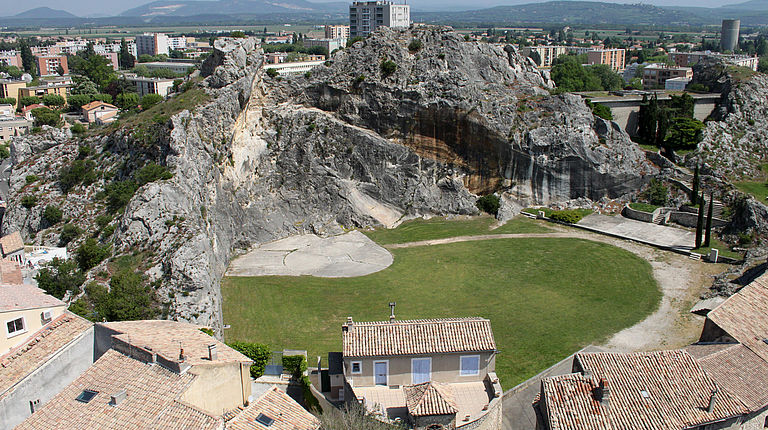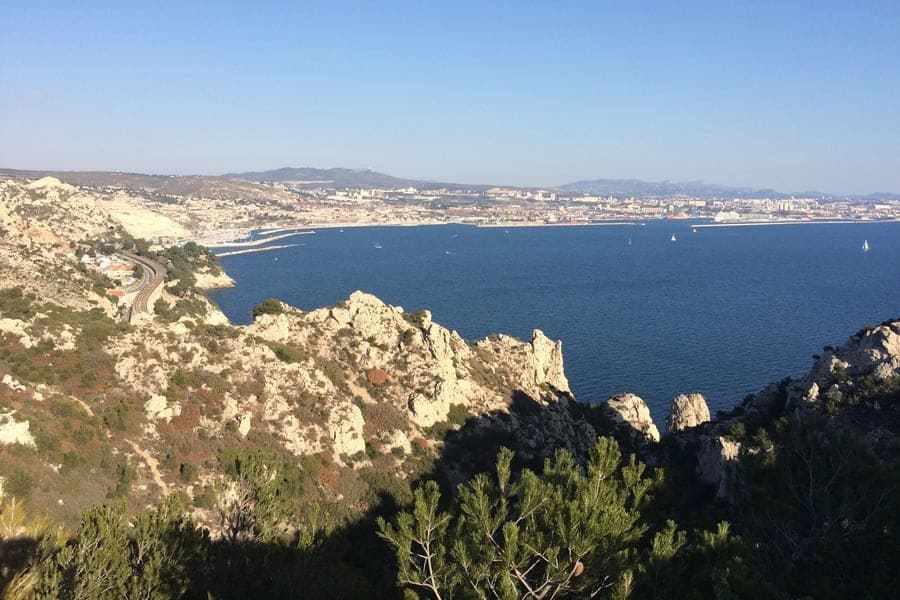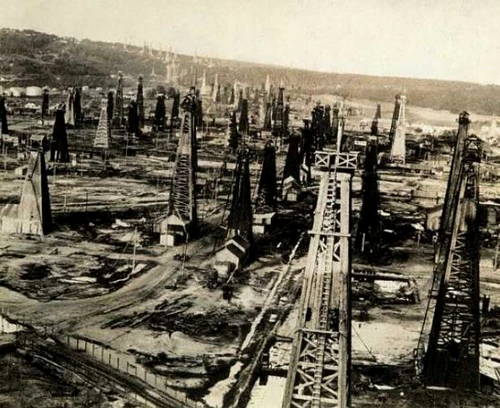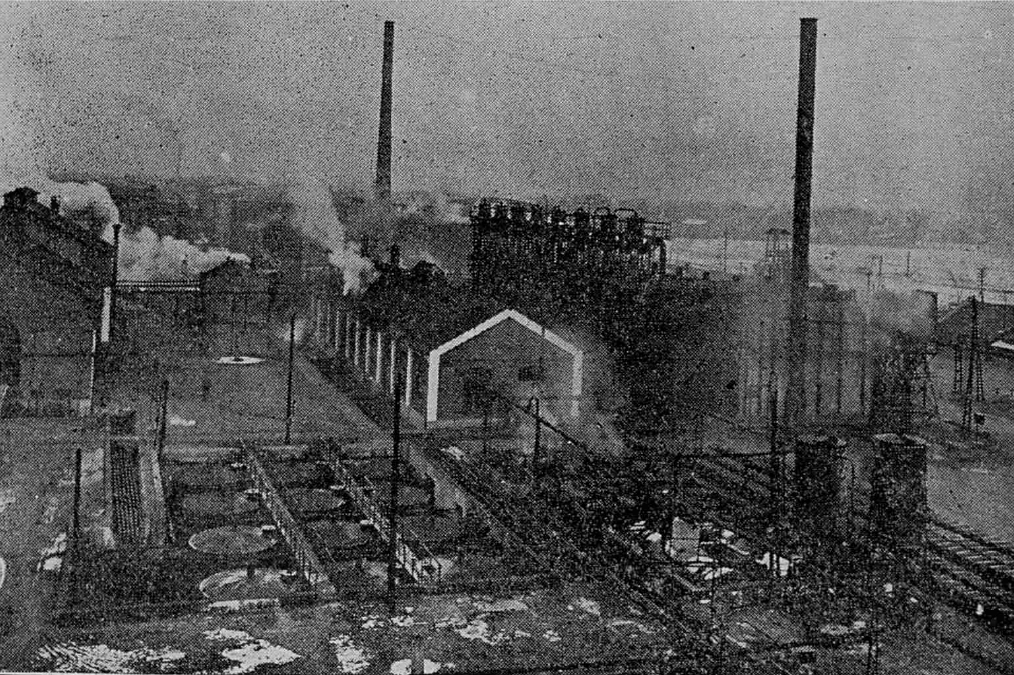Alpes et Provence – Mountains, river and fortifications
Hartmann's 1. Kompanie is the first to enter. In fact, and despite the ordered break, the fighting is struggling to really stop around Lyon... And for lack of works to seize as in Holland - almost all the bridges over the Rhône have been destroyed - the
Brandenburgers are quickly solicited by the 16. Armee (in the Alps) to try to force the locks put in place by the French. Indeed, at the gates of Grenoble, the Heer accumulated losses in the Voreppe gully against the guns firing from the summits... Wolf-Justin Hartmann therefore dispatched half a company - mainly former mountain troops, of course - while he is preparing the sequel on the banks of the Rhône. On July 3, he will witness the defeat of the troops trying to seize Tain-L'Hermitage, which convinces him that it is only possible to cross the rivers at an acceptable cost by trickery.
On July 10, the
Brandenburgers take action. In the valley of Grenoble, leaving to the Gebirgsjägers the task of attacking the
Chartreuse, 40 men infiltrated towards the
Vercors plateau by crossing the Isère around Vinay, disguised as refugees from the region… The line of front crossed – it is very sparsely furnished in this not very strategic sector, the French have left a minimum of troops behind – they climb towards Malleval-en-Vercors then walk through the woods towards their objective.
At the same time, near Châteauneuf-sur-Isère, a dozen men chosen by Hartmann from among Germans speaking English – even African dialects *– and dressed in French uniforms tried to infiltrate at night through three different crossing points. Their goal is to secure an embryonic bridgehead which will allow the landing of the rest of the group, which will clear a space facilitating the future assault... Indeed, given the vigilance of the French - who are of course expecting an attempt to passage in force on the bridges of Romans – the
Oberleutnant has given up on seizing the works of art. Might as well send his men to the massacre. On the other hand, very long and very meticulous reconnaissance - carried out under enemy fire, while hoping that the flow of the
Isère would eventually drop... - made it possible to identify several weak points in the defenses, faults that the
Brandenburgers are keen to enlarge. And yet, the attempt of July 10 is not really successful: the first group is spotted as soon as the canoe is in the water – under fire, it has to withdraw towards the friendly bank. The second group – that of the “
Africans” – does not manage to cross, as the current is strong. He must give up. As for the third group, it drifts, carried along towards the current, to a deserted area west of its objective. At least he was able to cross! Learned from this experience and even though the “
regular” assault is already on the way to failure**, Hartmann prefers to call back these lost children – no need to take risks for nothing; we will start again later, with the concern of both security and discretion. During this time, Wilhelm List observes the French cannons bludgeoning his armored points, and is annoyed as much by the lack of progress of his men as by the modesty of these Brandenburgers who do nothing useful!
It will take two days for Hartmann to succeed in taming the waves and proving him wrong, taking full advantage of the multiple German engagements all around him, which drain the French means, the attention of the defenders and the fire of their artillery. . On the night of July 12 to 13, the
Brandenburgers finally infiltrated the wetlands north of the place called
Les Robins, west of Châteauneuf-sur-Isère. Falling by night and in French uniforms on exhausted sentries, the Abwehr men (although they approached the sentries speaking English!) cleared a bridgehead about 500 meters wide, which would be very useful to the Heer forces to cross in inflatable boats before heading towards Valence and Romans.
There is currently no evidence that the 2. Kompanie participated in the fighting in Valence and the abuses that were committed there. Admittedly, it is possible, if not probable, that the
Brandenburgers gave a few occasional helping hands to raise barricades or hedgehogs, as during the Polish campaign, but it is very doubtful that von Hippel nevertheless authorized his men to risk their life in simple urban combat retardants. Unfortunately, this did not change the outcome of the fighting and the
Wehrmacht was finally able to surge south.
Meanwhile, west of Grenoble, the 40 soldiers who had left three days earlier discreetly crossed the
Vercors in small groups – avoiding patrols and villages, walking through woods and mountains to finally descend via Saint-Nizier-Du-Moucherotte towards Pariset, Seyssinet-Pariset and especially towards their objective: the
fort de Comboire, an essential link in the old fortified belt west of Grenoble and which fires the 155 mm long cannon on the German waves rising to the assault. The work being what it is – located on a rocky outcrop between the Drac and the Vercors, in the middle of the forest – it is very difficult for the Stukas to silence it. No less than four positions lined with anti-aircraft weapons prevent the vultures from approaching.
The fort de Comboire nowadays
Finally regrouped around the small village of Cossey, the 35 men *** spent the night of July 13 to 14 scouting. Recovering from here and there a dozen French uniforms, the
Brandenburgers do what they know how to do best: infiltrate by taking advantage of the darkness and the confusion. Three of the four anti-aircraft batteries are silenced in less than an hour – the defenders did not expect to see soldiers in friendly uniform approaching from this direction. For the fourth, on the other hand, the closest to the fort, the task turns out to be more complicated... All this bustle of course puts the fort on alert, but far from coming out to help their comrades – which would have done the business of the detachment – the garrison takes refuge in the work and alerts the entire belt of infiltration in progress. And once the battery was destroyed, the
Brandenburgers were therefore obliged to withdraw under cover of the woods, pending the continuation.
It will not be long: at 10:00 a.m., several
Staffels of
Stukas of StG.1 come to bludgeon the French artillery positions... Their anti-aircraft aircraft reduced to a few machine guns, the Comboire
defenders can do nothing against the birds of misfortune which dive and destroy the most parts, finally silencing the position. It wouldn't have been long before the Germans discovered anyway that these batteries were running out of ammunition after so many days of fighting.
Meanwhile, a little further north, the rest of the half-company is fighting south of the
Chartreuse to help the Gebirgsjägers seize the Bastille fort, under the watchful eye of Néron. In the afternoon, the
Bastille, then
Comboire surrendered, definitively reduced to silence. In the valley, the
Landsers have already forced the lock on the
capitale des Alpes and are marching south to eliminate the part of the fortified belt facing south and Italy; this one, less garrisoned and oriented towards Italy - therefore the East - will pose much fewer problems. The
Brandenburgers deployed in Grenoble will then render a few more minor services, in particular by reducing several fortified positions in
Queyras, south of Briançon – but without taking too many risks. It would be doing too much service to the
Regio Esercito when the Armée des Alpes, wedged between Germans and Italians, must retreat anyway.
The fort de la Bastille nowadays
For its part, and once the line of the Isère is forced, the rest of the 2. Kompanie accompanies the 12. Armee in its progression along the Rhône valley. He helped in the capture of Montélimar by confusing the retreating French troops with false signposts and by destroying or blocking several sections of mountain road in the south of the Drôme. On July 17, a group had their photo taken on the
rocher de Pierrelatte – the weather was very nice and the
Drôme Provençale is a beautiful region… The advance was ever more brisk (the Germans were in Bollène the next day!), the
Brandenburgers hardly have the opportunity to shine. From time to time, they help clear the host of obstacles left by the retreating French – their pioneer training is very useful, since the unit will not mourn any deaths during this period, which will not be the case for everyone in the 12. Army. Even today, a tenacious rumor claims that
Obergruppenführer Theodor Eicke would have disdainfully refused the offer made to him to assist him during his crossing of the Ardèche. Questioned much later on such a scenario, General Lambert disdainfully commented that if by chance the German army had sent 'its'
Brandenburgers forward, they would have been at least as painfully surprised anyway by falling on the
Chasseurs Ardennais: "
some might have had the right accent, but anyway, it wouldn't have been the right uniform..." ****
The rocher de Pierrelatte nowadays
The rest of the campaign takes place along the Rhône. On July 26, the
Brandenburgers of the 2. Kompanie – finally reunited – took the
Col du Télégraphe at a run, which opened the way to the
Etang de Berre, at the height of Salon-de-Provence. In this sector without opposition, they are very quickly overtaken by Panzers in a hurry to dip their tracks in the
Vieux Port. The latter will nevertheless have to wait two days for the Vitrolles chain to be forced – here, the French troops are making their last square, and they know very well that they cannot be evacuated anyway…
Remaining very fortunately for them far from the carnage of the infantry rising to the assault, Hartmann and his men attacked all the same on the night of July 27 - for lack of other available pioneers - the
fort de Figuerolles, where the
178e Batterie d'Artillerie covers Marseilles. But the Germans were not very comfortable in the scrubland, stuck on a piece of rock between the sea and the front... It took them two days to overcome the fort, which fell on July 29, while the battle de Vitrolles ends – the last defenders will surrender to the regular forces of the
Heer after two more days of resistance, trapped in galleries without water… The battery destroyed, Hartmann did not see fit to send men to look for them, while he has already lost 4 dead and several injured in the affair.
The fort de Figuerolles nowadays and it's wiew toward Marseille
Let us take this opportunity to reaffirm a point: there is no trace of an attempt by the
Brandenburgers to infiltrate as far as the port of Marseille in order to disrupt the
Grand Déménagement – and it is even doubtful that they received the order. The reason is very simple: from July 20, the evacuation of the French forces still transferable is practically only carried out at night, in a city subjected to bombardments, teeming with soldiers with easy triggers, and in a port whose dockworkers – who all know each other, of course – are exhausted, nervous and often armed. Under these conditions, a few men injected into such an anthill would have been, at best, sent back to the front, at worst unmasked, unless a German bomb mowed them down on the way... Certainly, no doubt it is not impossible that he group was sent as lost children on July 12 – but such risk-taking for the sole pleasure of aggravating the chaos would still seem quite surprising… even if we will see a little further than the 1. Kompanie attempted actually something like that.
Anyway, the campaign of France of the men of Hartmann stops in Toulon, on August 4, where their group is among the first to penetrate the
Arsenal which has just capitulated. The
Kriesgmarine – which is obviously linked with the
Abwehr – still hopes to limit the destruction of the installations a little by a rapid takeover allowing the charges to be defused… Of course, this will not be the case. The 2. Kompanie will finally pack up to go up to Brandenburg an der Havel from the 10th.
* Dialects from Togo or Cameroon. The faces of these men were blackened with shoe polish, but Hartmann chose to overlook the fact that most French “
Senegalese” obviously do not speak the dialects in question!
** As usual, the Heer chose not to let its tempo be imposed by such a small unit – moreover, attached to the navy and using despicable combat methods.
*** A group of 5 men got lost on the way – they will never be found. It is still unknown today whether they were unmasked and shot as spies, victims of fire from a French detachment more nervous than the others... or machine-gunned by a marauding Stuka.
**** Even today, resentment against German-speaking Belgians is tenacious among some veterans...
